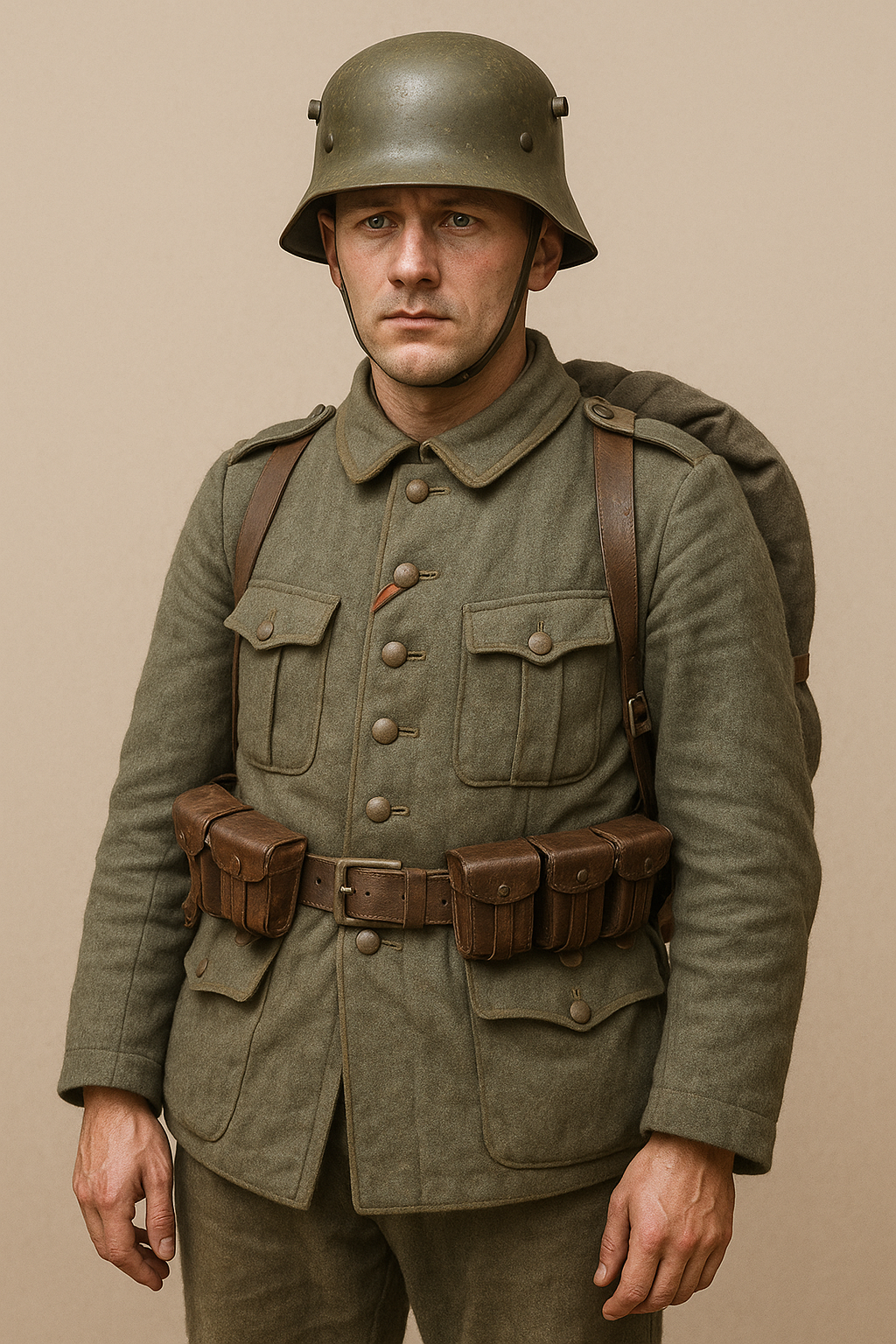
WW1 German Uniforms Guide: History, Buying Tips & Collecting Pitfalls
Published on Sep 21, 2025
WW1 German Uniforms Guide: History, Buying Tips & Collecting Pitfalls
Intents: Informational 50%, Commercial 50% german ww1 uniforms
🧠 Did You Know?
Over 13 million German soldiers served in WW1—and the evolution of their uniforms tells a powerful story of innovation, necessity, and national identity. But did you know that a single original German WW1 tunic can sell for over $1,500 today?
If you're fascinated by history or starting a military collection, understanding WW1 German uniforms is a crucial first step.
In this guide, we’ll explore:
- The history behind German WW1 uniforms
- How to identify original pieces
- Common mistakes collectors make
- How to safely buy or sell gear
- And modern trends in uniform collecting
Let’s dive into the world of German WW1 uniforms—one field button at a time.
⚔️ The Evolution of WW1 German Uniforms
A Brief History of the German Uniform WW1
The German WW1 uniform evolved rapidly between 1914 and 1918 due to technological advances, field conditions, and economic shortages.
Key changes:
- Pre-war (1910): Dark blue tunics (the iconic Feldbluse) with red piping.
- 1915 Onward: The introduction of the "feldgrau" (field grey) color for camouflage.
- 1916 Stahlhelm: Replaced the Pickelhaube (spiked helmet) with the steel helmet for better protection.
These changes not only improved functionality but also became symbolic of Germany’s shifting military strategies.
Related keywords naturally included:
- german ww1 uniform
- ww1 german uniforms
🎯 How to Identify Authentic German WW1 Uniforms
Intents: Informational 50%, Commercial 50% german ww1 uniforms
✅ Look For These Key Authenticity Features:
- Stitching & Fabric: Originals used coarse wool and hand stitching.
- Markings: Interior stamps with regiment, year, and depot info.
- Feldgrau Color: Not green or grey-green—true feldgrau has a bluish tone.
- Buttons: Often made from zinc or brass with regiment numbers.
🧪 Real Example:
A collector recently found a feldgrau tunic at a flea market in Berlin. It had proper markings and pre-1916 buttons. With authentication, its value shot up to $1,200.
⚠️ Common Pitfalls When Buying German WW1 Uniforms
Buying vintage military gear can be a minefield—literally and figuratively.
🚫 Pitfall #1: Falling for Reproductions
Reproductions have improved dramatically. Always verify with:
- A trusted military historian
- UV light testing (modern fabrics glow)
- Smell test (old wool has a distinct scent)
🚫 Pitfall #2: Buying Without Provenance
Always request the item’s origin, previous owners, or museum documentation.
🚫 Pitfall #3: Confusing WW1 with WW2
Many mix up German WW1 uniforms with World War II American uniforms due to similar khaki shades. Remember:
- WW1 German uniforms were darker and had more traditional designs.
- WW2 American gear was more olive drab and featured M41 field jackets.
🛒 Where to Buy WW1 German Uniforms Safely
Intents: Informational 54%, Commercial 46% german uniform ww1
If you're ready to start your collection, here are your safest bets:
🏛️ Top Online Marketplaces:
- eBay (with caution and seller vetting)
- Militaria Shows (like SOS or MAX)
- Dedicated Collecting Forums like Wehrmacht Awards
- Auction Houses such as Hermann Historica or C&T Auctions
📋 Tips for Buying:
- Always ask for multiple photos and detailed provenance
- Use escrow services for high-value transactions
- Join forums and ask experts before purchasing
📈 Modern Trends in Collecting WW1 German Uniforms
📌 Trend 1: Digital Authentication
Apps and AI-powered databases now help verify uniforms based on images and stitching patterns.
📌 Trend 2: Crossover Interest in WW2 Gear
Many collectors of World War II American uniforms are now branching into German WW1 uniforms due to increased value and rarity.
📌 Trend 3: Restoration Services
Professional restorers now offer:
- Original fabric patching
- Re-dyeing with era-accurate feldgrau
- Button and insignia replacement
🧰 Actionable Steps to Start Collecting
🪖 Beginner's Checklist:
- 📘 Study visual guides on German WW1 uniforms
- 🕵️♂️ Join online communities and ask for advice
- 💰 Set a monthly budget (don’t overspend early)
- 🛡️ Buy display cases with UV protection
- 🧽 Learn proper storage methods (avoid humidity!)
📚 Bonus: Resources for History Buffs
- 📖 Books: Imperial German Army Handbook 1914–1918 by Alex Buchner
- 🎧 Podcasts: Hardcore History: Blueprint for Armageddon
- 📺 YouTube Channels: Military History Visualized, HistoryMarche
These will deepen your understanding and sharpen your collector’s eye.
🏁 Conclusion: The Uniform Tells the Story
Intents: Informational 50%, Commercial 50% german ww1 uniforms
Whether you’re a beginner or a seasoned historian, collecting or studying German WW1 uniforms opens a unique window into early 20th-century warfare.
These uniforms are more than fabric and buttons—they’re relics of bravery, hardship, and history.
